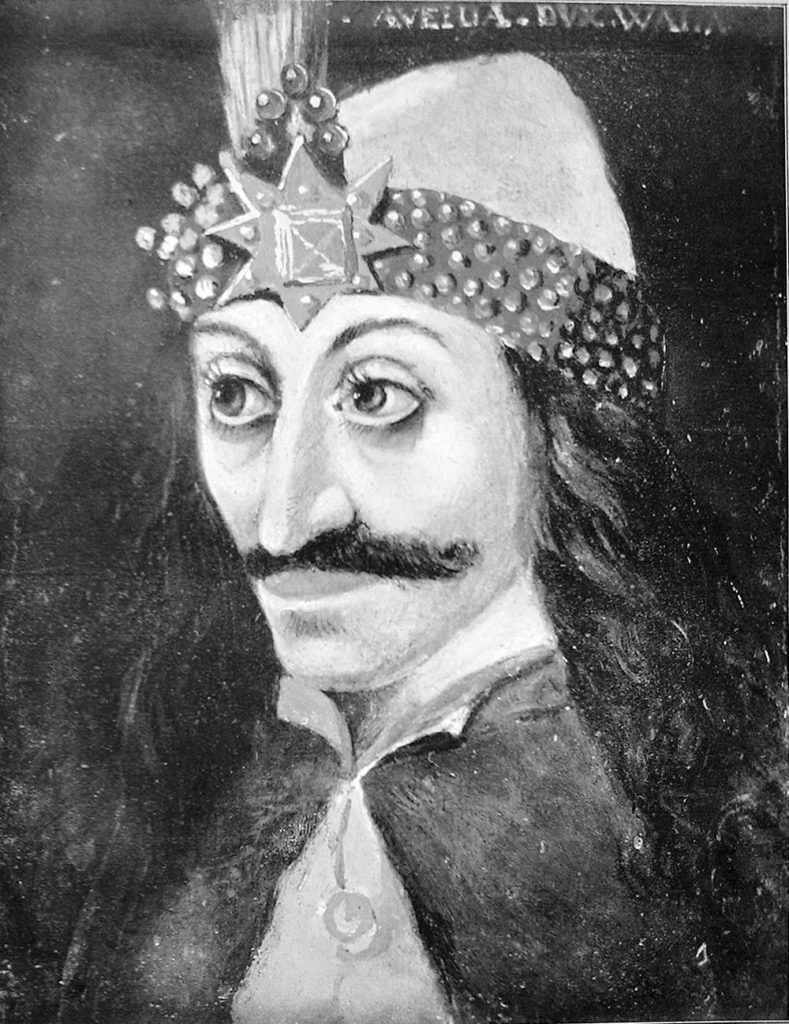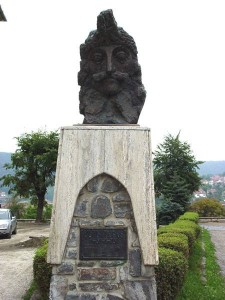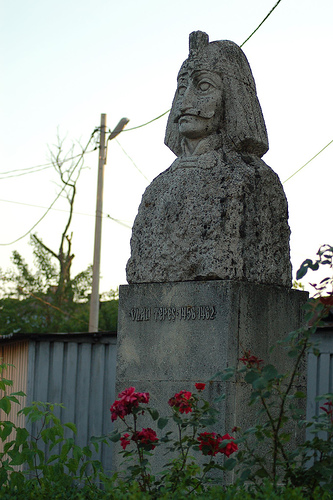
Before dwelling on who the fictional antihero of Stoker’s book actually was, it is imperative that I clarify the very nickname by which this character is known, in order to avoid falling into a widespread (yet understandable) error: the name, or rather, the exact nickname of our Prince of Wallachia is not as most people believe DRACULA (which is nothing more than an adaptation from the Romanian), but DRACULEA. The etymology of the name is evident to a Romanian, however it is a little less so for those who are familiar with vampire novels, so a short clarification is advisable. As many will already know, the nickname DRACULEA, whose story I will explain later, plays on the ambiguity of meaning of the noun DRAC (‘dragon or devil’), and -UL is nothing more than the definite article (‘the); then, -EA means “son of”, as the nickname of his House came from his father. Having said that, we can now dwell on the description of the true story of Vlad III.
On 8 February 1431, a group of Wallachian aristocrats met in Nuremberg, the city of imperial diets, to take part in an important historical event: Emperor Sigismund of Luxembourg granted the control over Wallachia to Vlad II, who had been living at his court for 8 years now. On the same day, Emperor Sigismund gave his protégé a necklace and a gilded medallion engraved with a dragon. That was the symbol of the knights of the Order of the Dragon. The medallion had an engraved dragon, portrayed with two spread wings and four open claws, with half-wide jaws, its tail wrapped around its head and its back split in two, bowing down in front of a double cross. That was a symbol of Christ’s victory over the forces of evil. That medallion was never to be taken off until after death. Then, it had to be placed in the coffin along with the corpse. (However, neither the body nor the coffin of Vlad III have ever been found.) This Order was founded by the Emperor of the Holy Roman Empire in 1387 and, like many other religious orders of knights, its members swore to protect the Teutonic monarch Sigismund of Luxembourg and his family, to defend the empire, to spread Catholicism, to protect children and widows, and to fight the Turkish invader.
While waiting for coronation, Vlad II and his family moved to Sighisoara, Transylvania. Vlad ordered to build a mint in this town. For the first two emissions, Vlad used his emblem, the dragon, hence the Romanian people, whose languae comes from Latin, nicknamed him Dracul (from the Latin Draconis, while in Romanian Drac means devil, as mentioned earlier). This nickname became a real surname for his descendants, including also his second son Vlad. Vlad III was born in December 1431. He spent his childhood in Sighisoara and, following the footsteps of his father, he too was trained to become a knight of the Order of the Dragon. That is how he learned the disciplines of swimming and fencing, he learned to joust, he learned archery and the most refined riding techniques and court label rules. He also learned the science of politics, whose principles at the time were essentially Machiavellian-inspired: “It’s much better for a prince to be feared than to be loved.” This way of thinking had a strong influence on the young prince’s personality.

After his father died, Vlad III was taken prisoner by the Turks and later served as an officer in their army, learning some of the torture techniques he would later use abundantly. Once he fled, he took refuge with an uncle, Iancu de Hunedoara, a Romanian nobleman. Vlad would marry his daughter later. After several attempts to ascend the throne of Wallachia, he eventually succeeded on 22 August 1456, at the age of 25. The beginning of his reign was characterized by the passage of a comet over Europe; for many it was a bad omen, but not for Vlad, who took it as a good omen, to the point that he had the comet engraved on one side of coins, while the other side portrayed the Wallachian eagle. One of the most bitter enemies of the Ottoman Empire, Vlad began reorganizing the state, the army, and reforming the laws, first of all by enforcing death penalty by impalement to all those he considered enemies: bandits, thieves, beggars, cunning priests, treacherous aristocrats, and Saxon usurpers, who aimed to replace him either with his cousin Dan cel Tanar (Dan the Young) or with his natural brother Vlad Calugarul (Vlad the Monk).
The Ottoman historians nicknamed him Vlad Tepes or Vlad the Impaler (in Romanian, TEAPA means stake), and by this name he was known by Romanian historians. However, he used to sign with the name of his father: Draculea. There is testimony of this in one of the first documents concerning him, which dates back to 20 September 1459, and also in the portrait of Odhsenbach Stambuch from Stuttgart.
Later, Vlad was arrested by his brother-in-law Matei Corvin because of a traitor and spent more than 10 years in prison in Visegard, near Buda.
Back to the throne in 1476 thanks to the help of Stefan cel Mare (Stefan the Great), Prince of Moldavia, the Senate of the Republic of Venice and Pope Sixtus IV, Vlad resumes his fight against the Ottomans, but towards the end of the same year he was assassinated in Snagov by Laiota Basarab, who succeeded him on the throne of Wallachia.

One of the best descriptions of Vlad III lies in the pages written by his contemporary, Pope Pius II, who marvels at the titanism of this man, who lived in the most ambiguous time of the Renaissance and combined in him every virtue and every wickedness. He looks at him with envy: “He was handsome,” he says, “tall and strong, born to command armies; but he was also a great intellectual, familiar with the esoteric tradition, alchemy, the evocation of spirits.” In short, the perfect incarnation of the total man of the Renaissance.